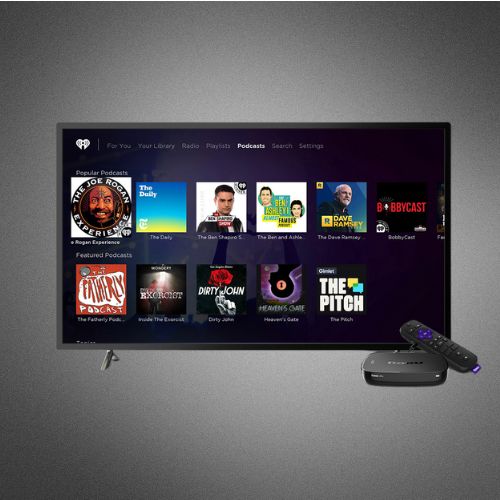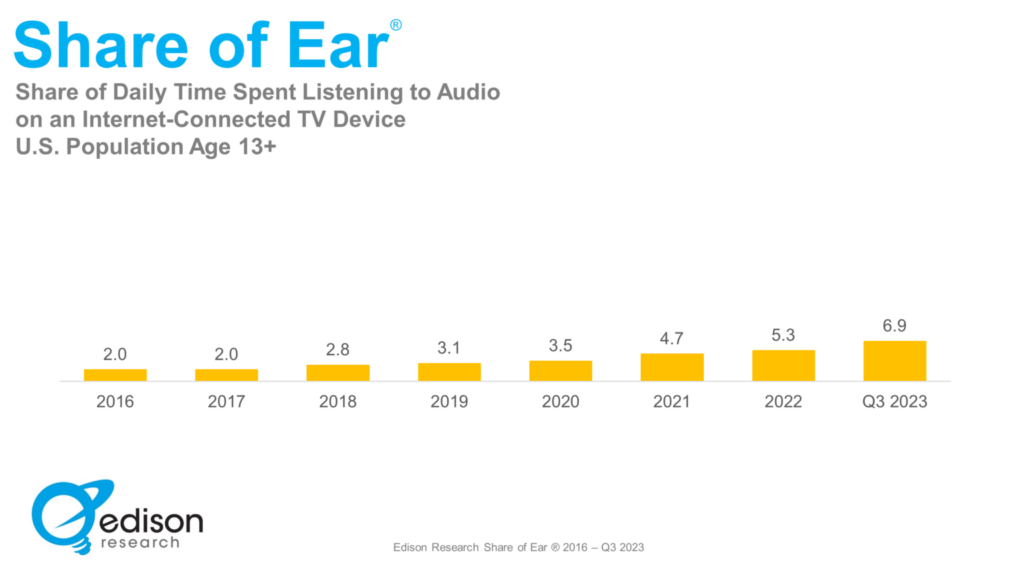
As traditional television audience rates drop, more and more people are turning to their Smart TVs and related devices for audio content. Edison Research’s Share of Ear finds the total daily audio time dedicated to Internet-connected TVs and devices has seen a noteworthy surge.
In 2016, only 2% of Americans aged 13 and above used these devices for their audio consumption. Jump to the most recent figures, and this metric has climbed to 6.9%. The pace of this growth has been especially pronounced since 2020, nearly doubling.
Viewers have a diverse array of choices when it comes to audio content on their televisions, with additional access through Rokus, Apple TVs, and gaming consoles. Platforms like Spotify, Amazon Music, and YouTube host plenty of free and subscription-based options. Of course, traditional AM/FM stations are also accessible through their online platforms or streaming aggregators like iHeart, Audacy, or TuneIn.

Another handy feature of Smart TVs is the ability to sync audio from a linked smartphone. Given the central placement of the television in most households and the increased home time post-COVID, one can anticipate this trend to persist and become a great opportunity for AM/FM as the number of physical radios in American homes dwindles and smart speaker proliferation stagnates.






The new Hampton Inn in my home city has iHeartRadio pre-installed as an app on the smart TV in every room— and no clock or radio.
Welcome to 2023. But … what if you are in a market where half the stations are not on iHeartRadio?